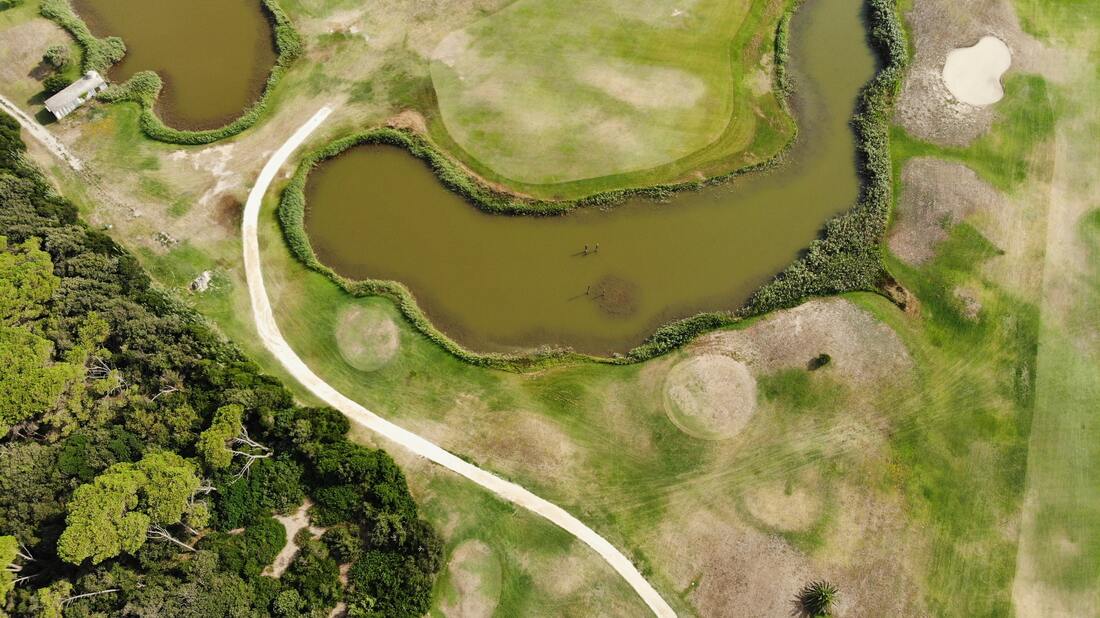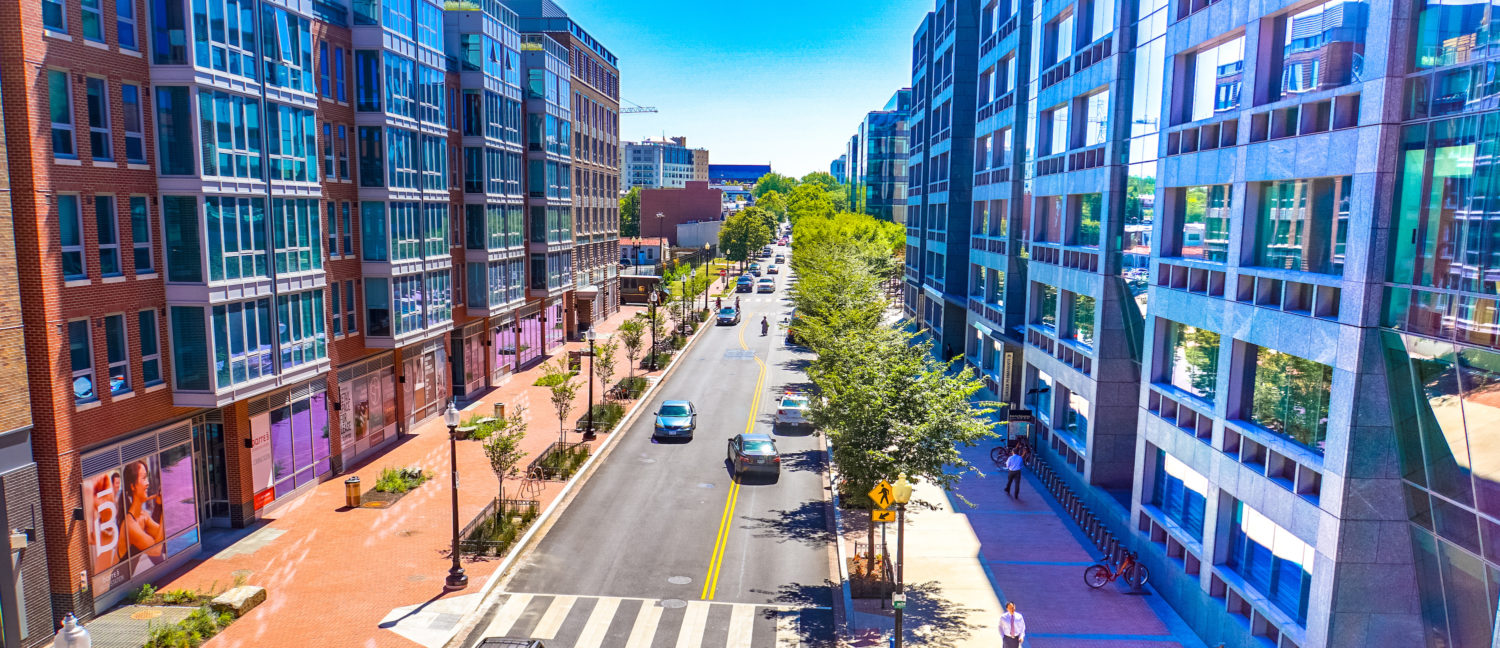Blog |
Discussing current issues in engineering
|
|
One of the largest urban stormwater initiatives ever undertaken in the state of Texas recently completed phase two of the five phase project involving the conversion of a 178-acre golf course into detention ponds, natural habitat areas, and recreational trails for the protection of thousands of homes from flooding events.
Located just outside of Houston in Clear Lake City, TX, an out-of-use 178-acre golf course and country club were purchased by Harris County for the purpose of converting the property into a series of five stormwater detention ponds that will protect approximately 2,000 – 3,000 homes from 100-year flood events. Named “Exploration Green” the project completed phase one in 2018 with the construction of a 23.7-acre detention pond, 15.2 acres of natural habitat, and 1.25 miles of recreational trails. When Hurricane Harvey hit in 2018, 80% of the first phase was completed and the detention area held enough stormwater runoff that houses that typically flooded with just 5 to 10 inches of water from storms had no flooding with the 45 inches of rain from Harvey. With the recent completion of phase two, the project added an additional 26.2-acre detention pond, 18 acres of natural habitat, and 1.3 miles of recreational trails. Together the two ponds provide a 250 acre-ft. storage capacity for flooding with natural areas comprising nearly 3 acres of wetlands, a small island providing bird habitat, and almost 15 acres of planted native grasses. In 2018 the project received an Excellence in Green Infrastructure Award from the U.S. Environmental Protection Agency and National Association of Flood and Stormwater Management Agencies and in 2020 the project was awarded the Engineering Excellence National Recognition Award from the American Council of Engineering Companies. Ultimately, Exploration Green will consist of 5 detention ponds and 40 acres of wetlands designed to hold 500 million gallons of stormwater and clean the runoff from 95% of the storms that occur in the community. All five phases are expected to be completed by 2022. Engineering News-Record (ENR) announced the 2020 MidAtlantic Best Project of the year was awarded to a project that constructed a seven-acre platform above highway I-395 in northwest Washington D.C., providing 2.2 million sq. ft. of commercial, retail, and open public space, while also creating a new 700,000 sq. ft. below-grade parking garage spanning three city blocks.
The $263.3 million project, “Capitol Crossing”, returned a three-block section of D.C. back into the city’s historic traffic grid by reestablishing an area between E. Street and Massachusetts Avenue near Capitol Hill. The original traffic grid, established by Pierre L’Enfant in 1791, was disrupted by the construction of highway I-395 in the 1960’s, which divided the East End and Capital Hill neighborhoods. I-395 however, was constructed below street level elevation and the contractors for Capital Crossing devised a plan to cover the existing highway with a massive seven-acre platform and restore street-level space. The project was first awarded Best Project in the highway/bridge category, placing it as a finalist for the overall MidAtlantic Best Project award. Two panels of industry judges reviewed nearly 100 projects based on criteria including the project’s ability to overcome challenges, contribute to the industry and community, safety and construction measures, and design quality. Ultimately, Capitol Crossing was selected the winning project of the year for the MidAtlantic region. Capital Crossing not only innovatively utilized space, but the project required extensive relocation of utilities including the installation of a new 138-kV high voltage transmission line, relocating a 36-inch water transmission line, excavating 30 ft. below the water table, and using a lift system with hydraulic jacks to move an 1876 Jewish Historical Society synagogue twice. In addition, the team had to coordinate extensively with the District’s Department of Transportation, the Federal Highway Administration, and other local and federal authorities for the maintenance and evaluation of affected traffic. The project developed a six-phase traffic control plan including a 24-hour traffic simulation model to help evaluate weekday and weekend construction activities. Overall, the Capitol Crossing team innovatively utilized available land space while improving traffic flow, reviving the historic vision of D.C., and providing commercial, retail, and pedestrian friendly promenade space. You can view complete building plans and layouts of Capitol Crossing at the official website here. Dedicated as a National Historic Civil Engineering Landmark in Rockfish Gap, VA, the Claudius Crozet Blue Ridge Tunnel conservation project is almost complete after 18 years of restoration efforts.
The Blue Ridge Tunnel was the longest railroad tunnel in North America at the time of its completion in 1858, traversing nearly one mile through the Afton Mountain connecting Nelson and Augusta county. The tunnel was originally built using only hand drills and black powder and allowed efficient travel Westward from the Eastern United States. With restoration funding provided by state grants and Federal transportation funds, the tunnel will offer 6,000 feet of pedestrian trails for hikers, walkers, and bicyclists while also linking into existing trail systems. Woolpert architecture, engineering, and geospatial firm was contracted in 2006 to provide planning, engineering, and construction plans for the design of the trails and restoration of the tunnel. Overall, the tunnel is 16 feet wide and 20 feet high with an exposed rock interior and located 500 feet beneath the Rockfish Gap ridge of the Blue Ridge Mountains. In October the restoration of the tunnel won a Construction and Design award by the Coalition for Recreational Trails and in 2015 the project also won the Central Virginia Chapter of WTS International’s Innovative Transportation Solutions Award. In September, the tunnel was officially dedicated by Virginia Gov. Ralph Northam and while the tunnel and trails are still under active construction, the public can expect the Blue Ridge Tunnel to open at the end of 2020. To learn more about the Claudius Crozet Blue Ridge Tunnel you can visit the Blue Ridge Tunnel Foundation’s website here. |
Colman Engineering, PLCA professional engineering firm located in Harrisonburg, VA Archives
January 2022
|




 RSS Feed
RSS Feed
